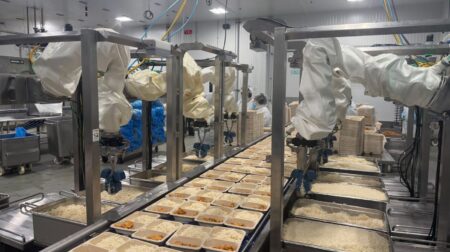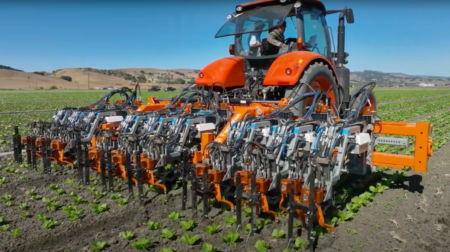Researchers at the University of Cambridge have trained a robot chef to assess the saltiness of a dish at different stages of the chewing process, imitating a similar process in humans.
Working in collaboration with domestic appliances manufacturer Beko, the team hope the solution could be useful in the development of automated or semi-automated food preparation by helping robots to learn what tastes good and what doesn’t, making them better cooks.
The robot chef, which has already been trained to make omelettes based on human taster’s feedback, tasted nine different variations of a simple dish of scrambled eggs and tomatoes at three different stages of the chewing process, and produced ‘taste maps’ of the different dishes.
The researchers found that this ‘taste as you go’ approach improved the robot’s ability to quickly and accurately assess the saltiness of the dish over other electronic tasting technologies, which only test a single homogenised sample. The results were published in the journal Frontiers in Robotics & AI.
“Most home cooks will be familiar with the concept of tasting as you go – checking a dish throughout the cooking process to check whether the balance of flavours is right,” said Grzegorz Sochacki from Cambridge’s Department of Engineering, the paper’s first author.
“If robots are to be used for certain aspects of food preparation, it’s important that they are able to ‘taste’ what they’re cooking.”
The researchers are members of Cambridge’s Bio-Inspired Robotics Laboratory, which focuses on training robots to carry out the so-called last metre problems which humans find easy, but robots find difficult. Cooking is one of these tasks: earlier tests with their robot ‘chef’ have produced a passable omelette using feedback from human tasters.
“We needed something cheap, small and fast to add to our robot so it could do the tasting: it needed to be cheap enough to use in a kitchen, small enough for a robot, and fast enough to use while cooking,” said Sochacki.
To imitate the human process of chewing and tasting in their robot chef, the researchers attached a conductance probe, which acts as a salinity sensor, to a robot arm. They prepared scrambled eggs and tomatoes, varying the number of tomatoes and the amount of salt in each dish. Using the probe, the robot ‘tasted’ the dishes in a grid-like fashion, returning a reading in just a few seconds.
To imitate the change in texture caused by chewing, the team then put the egg mixture in a blender and had the robot test the dish again. The different readings at different points of ‘chewing’ produced taste maps of each dish.
While their technique is a proof of concept, the researchers said that by imitating the human processes of chewing and tasting, robots will eventually be able to produce food that humans will enjoy and could be tweaked according to individual tastes.







